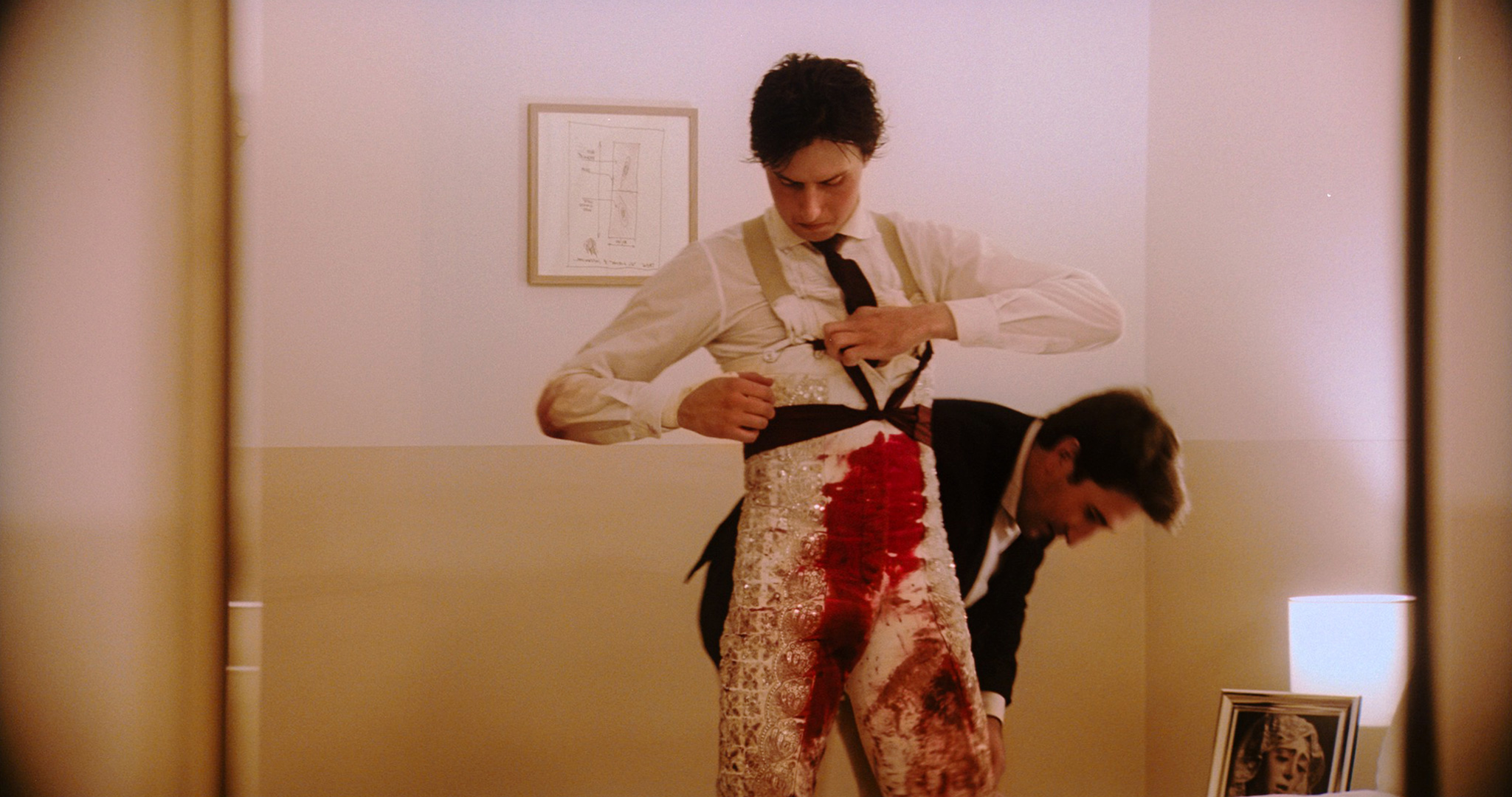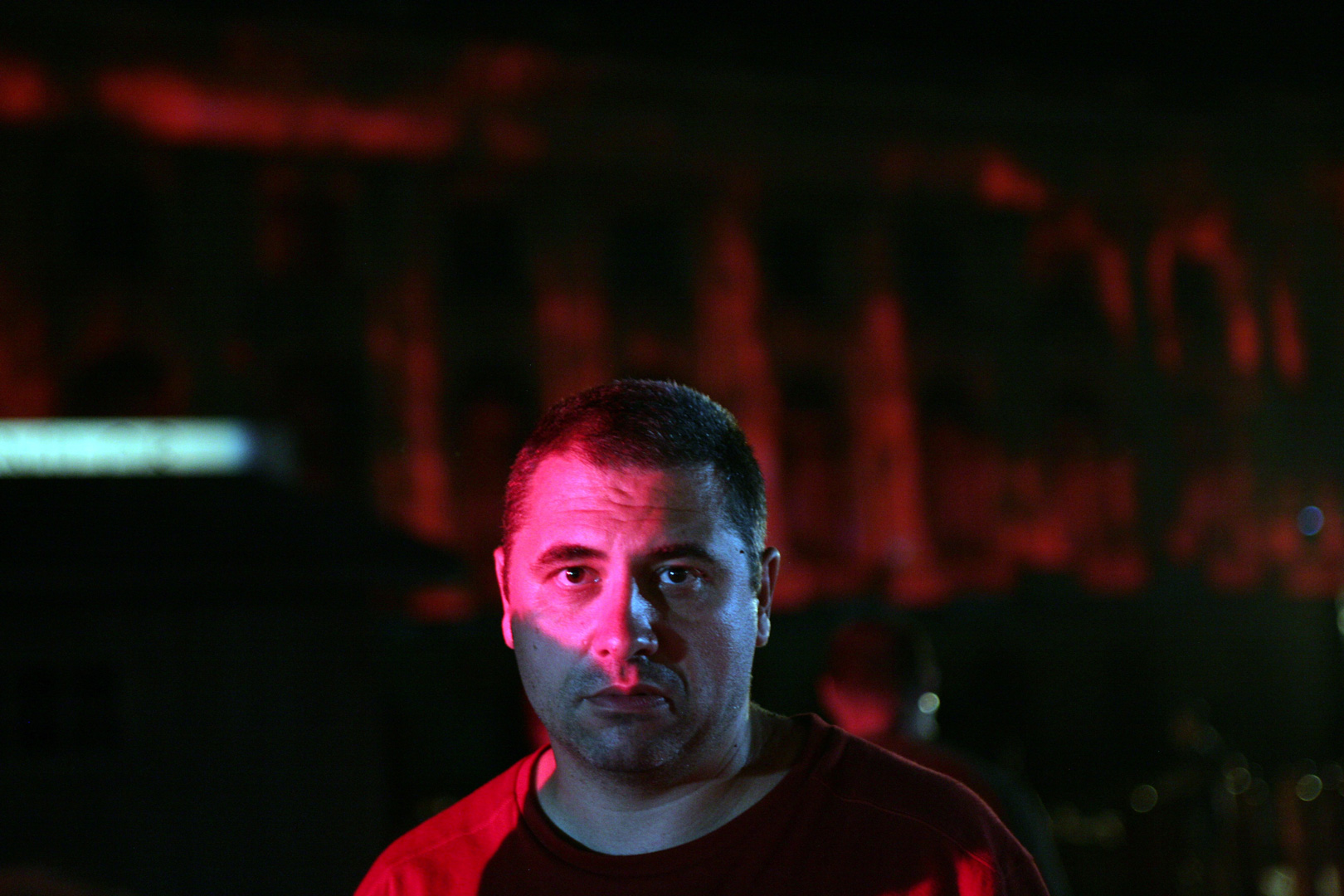The term “alternative” has been the guiding principle that has defined the JEONJU International Film Festival (JEONJU IFF) for 26 years. Setting “digital” as an alternative to film, the JEONJU IFF centered on “independent cinema” as an alternative to mainstream cinema, and proclaimed “Cinema, Liberated and Expressed” as an alternative to convention. Then what kind of alternative is needed in today’s world of film, where the economic crisis is suffocating culture, cultural policies are being swayed by political circumstances, and the focus is on industries rather than art? This is where the 26th JEONJU IFF’s special exhibition “Special Focus: Possible Cinemas” began.
The special exhibition “Special Focus: Possible Cinemas” introduces 12 films made by 9 creative teams. Featured are another film by Radu JUDE, who directed this year’s opening film, Kontinental ’25, the production company El Pampero Cine, whose director Mariano LLINÁS who has been a long-time subject of attention for JEONJU IFF, and the Korean production company Saranghaja which builds teams that create their own films. We conducted interviews to ask these creators, who prioritize “cinema” in all circumstances, what cinema means to them, how they balance cinema as art and cinema as an industry, and what it is like to live as a filmmaker in this era. These interviews were then published in the book POSSIBLE CINEMAS. Here, programmer Sung Moon, who curated the special exhibition, examines the reality of Korean cinema and conveys the inspiration we can draw from these creators.
“I am interested in making films from a notion of closeness that industrial systems sometimes make difficult. I am interested in working on certain stories, materials, and staging that are not so easy to translate into a dossier and convince large financing structures. Luckily, I like to work economically, in the times that the project needs, and with a group of people who are who they are and not who they should be.”
Matías Piñeiro1
“What is the spirit of the JEONJU International Film Festival, and what should it be?”
This question follows me at every turn—when selecting films for screening or when contemplating the festival’s broader direction. Last year, JEONJU International Film Festival screened Room 666 (Wim Wenders, 1982), a documentary that asked various directors whether they believed cinema was a disappearing art form.2 In the film, Jean-Luc Godard remarked, “Cinema was born with small movies.” This statement inspired the concept for “Special Focus: Possible Cinemas” for the 26th JEONJU IFF.
What constitutes a “small film” in today’s landscape? The answer spans various dimensions: budget, filming technique, production methodology, or independence from mainstream cinema. Consider Godard himself, who crafted his final works at his home in Rolle, Switzerland, with just a handful of collaborators working on a small scale, almost by hand—perhaps this example could be the answer to our earlier question.
Within the Korean film ecosystem, JEONJU IFF has carved out its identity as the festival championing the most independent cinema. Since 2014, the JEONJU Project has been investing up to KRW 100 million in a feature film annually, and directors are required to complete their work by the following year to be screened at the festival. The initiative, designed to support filmmakers with at least one feature film under their belt and to vitalize low-budget production, has brought thirty-seven films into existence to date. Yet recently, we have noticed an increasing number of emerging directors spending considerable time seeking supplementary funding even after receiving our funding of KRW 100 million. At the same time, we have been receiving more frequent inquiries from acclaimed filmmakers with prestigious festival accolades about our investment. These circumstances reveal two troubling realities—one, films are becoming increasingly expensive to produce, and two, even established auteurs who have made their marks in the history of cinema struggle to secure financial investments. Directors—whether newcomers or masters—waste precious years chasing production funds rather than realizing their creative visions. Then the question becomes: is there a way to breakthrough the current situation?
The 26th JEONJU IFF’s Special Focus: Possible Cinemas showcases nine creative teams who consistently produce films through independent means. Though sparked by Godard’s notion of “small films,” these featured filmmakers are anything but “small.” They routinely receive invitations to—and occasionally win awards at—the world’s most prestigious film festivals like Cannes, Berlin, Venice, and Locarno, creating critically acclaimed works with remarkably consistency.
In Search of Sensibility and Creation
In his book Ornament and Crime (1908), Austrian architect Adolf Loos observed the stagnation of Austrian craft arts, with neither educational institutions nor industry finding viable solutions. His proposed alternative was as follows: “…revolutions always come from below. And that ‘below’ is the workshop.” Loos emphasized the necessity to work continuously at the most fundamental level, exploring possibilities beyond standardized learning. A “new spirit,” he argued, never emerges from something that has been tamed and mainstreamed.
There is a common misconception that independent cinema means “low-budget filmmaking,” but independence in filmmaking is not only about financial constraints—it is about placing autonomous, self-directed creative spirit at the heart of film production. Some producers dismissively regard independent films as merely “practice for commercial cinema,” foolishly suggesting that landing a job with global platforms is a creator’s ultimate achievement. Yet the very essence of independent cinema is its resistance to making money and fame the centerpiece of everything. It is about experimenting with diverse production methods and aesthetic possibilities without simply adopting commercial film grammar. Recently, some independent productions have imported commercial systems, with director, producer, and actor fees consuming nearly half the total budget. While mimicking such systems might help cover living expenses in the short term, it is unclear whether this approach sustains long-term creative work or benefits the broader independent film community. Argentina’s El Pampero Cine, featured in this book, operates as a collective, distributing profits equally among all staff and reinvesting in future projects. Filmmakers like Ted Fendt and Nicolás Pereda pay their crews modest fees from money earned through their day jobs. Others, like Marie Losier, Travis Wilkerson, Declan Clarke, and Saranghaja handle almost everything themselves as they lack sufficient funds to pay others. Radu Jude even demonstrated through Sleep #2 (2024) how one could make a film without leaving his room, using the “desktop film” format.
Other examples also challenge out conventional thinking about film and capital. Despite challenging national economic conditions, Latin American independent cinema flourishes with diversity and creativity on the international film festival circuit. What distinguishes these filmmakers is their tendency to work in tight-knit groups of friends, creating films that spring from personal stories. They boldly comment on contemporary social and political issues and experiment freely with alternative cinematic languages. Though their crews consist of friends, these are not “amateur films”—they embody the “amateur spirit,” which is altogether different. Regarding the “amateur spirit,” Jonas Mekas said:
“Every breaking away from the conventional, dead, official cinema is a healthy sign. We need less perfect but more free films. If only our younger film-makers— I have no hopes for the old generation—would really break loose, completely loose, out of themselves, wildly, anarchically! There is no other way to break the frozen cinematic conventions than through a complete derangement of the official cinematic senses.”
The amateur spirit is a free spirit, unbounded by systems or institutions. It means refusing to be constrained by capital, rejecting established rules and formal film grammar, and committing to realize one’s vision outside the race for recognition and speed. Just as making different choices and interpretations constitutes transformation, perhaps what Korean cinema needs most today is a revolution in thinking.
Toward a Proper Impropriety
The emergence of the Korean New Wave in the 1990s catapulted Korean filmmakers into the global spotlight for over a decade. Directors who rose to prominence, such as Park Chan-wook, Bong Joon-ho, and Kim Jee-woon, introduced radically new forms of Korean cinema. During this same period, the Korean film industry built a formidable system capable of going toe-to-toe with Hollywood blockbusters, earning admiration and envy of the world. Some directors from this era, including the three mentioned above, remain at the forefront of the industry, working on big-budget productions that premiere at prestigious international film festivals. But as with any success story, there is a shadow side: many independent filmmakers who emerged during this period never gained a foothold in the industry. While the Korean independent film scene has consistently discovered talented directors, there are only a handful of those who maintain their distinctive voice while sustaining ongoing work. Director Hong Sang-soo stands as a remarkable exception, as he first cemented his reputation as an auteur before shifting to small-budget filmmaking.
In today’s Korean film scene, making a debut feature has become easier than sustaining a directorial career. As the industry has expanded, production costs have skyrocketed across the board, and independent cinema is no exception. Distribution faces similar challenges. Aside from film festivals, screening venues for independent films continue to diminish. Amid such shifts in the industry, the concerns facing JEONJU IFF have only deepened. No single film festival can untangle all these complex, interconnected problems, of course. In fact, festivals and markets may themselves be contributing factors to this problem. As one of the original staff who launched industry events at JEONJU IFF, and now after seven years as the festival’s programmer, I have begun questioning whether mentoring programs genuinely nurture original filmmakers. Such mentoring inevitably dispenses advice within frameworks designed to conform to industry standards and festival expectations. This has led me to wonder whether these programs simply yield films that are similar to existing works or produce merely average works. While filmmakers who write and edit in isolation certainly can benefit from community experience, how can we encourage them to preserve their uniqueness in the process and create improper and provocative films? To achieve this, creators must embrace a truly independent spirit.
In Pursuit of Creation
At this year’s Berlinale, Radu Jude, who won the Silver Bear for Best Screenplay for Kontinental ’25 (2025), mentioned Nicholas Ray in his acceptance speech, drawing from Luis Buñuel’s memoir My Last Breath:
“Before coming here, I opened the internet…and I observed today is 125 years since Luis Buñuel was born. Allow me to dedicate this award to his legacy, which is the legacy of irreverence first of all I think, and to tell you a small anecdote you can find in his autobiography and in the great Pedro Costa film about Straub [Jean-Marie Straub and Danièle Huillet in Where Does Your Hidden Smile Lie? (2001)]
At some point Buñuel met Nicolas Ray, and Nicolas Ray said to Buñuel how great it is you can make these cheap movies. Buñuel said you made a big production, now you can make a cheap film yourself. And he said no, no, no, that’s impossible because in Hollywood you have to go always with bigger budget, bigger budget, bigger budget – so it’s impossible. Well, I think that’s the thing we have to fight in cinema against this stupid logic.”3
Having an independent spirit in filmmaking means breaking from production conventions around budgets and style. Radu Jude embodies this spirit of making small films by rejecting foolish industry stereotypes. He shot his latest film Kontinental ’25 entirely on a smartphone. However, working with a modest budget and utilizing new technology is not the only thing that makes his films shine. While his approach certainly involved various technical experimentation, he does not foreground this aspect. TikTok’s vertical format, for instance, has existed in painting for centuries as part of aspect ratio experiments, and online short-form videos merely applies traditional shot-reverse-shot techniques at a faster pace rather than creating a new visual aesthetic. Instead, Jude weaves TikTok and social media into his narrative framework, highlighting how platforms that seemed alien just a few years ago have become everyday communication tools. He employs contemporary technology not as mere formal device but as a thematic element, creating a new cinematic language for our time.
The rapidly advancing technologies of virtual reality and artificial intelligence are undeniably influencing filmmaking. However, as Jude’s case demonstrates, technological developments in cultural sphere should be discussed primarily through the lens of cultural and artistic concepts. These technologies are tools, not the driving spirit.
The creators featured in this year’s Special Focus, including Jude, display boldness and determination in applying current technologies to cinematic aesthetics. They also share several other commonalities: they maintain absolute independence in production; they have established distinct styles as auteurs, leaving their mark on the film industry; and they are prolific. Rather than wasting years seeking external producers or waiting for funding, these genuine filmmakers openly express the joy they find in pursuing art and their craft. Perhaps most importantly, they share this last commonality: as their body of work has grown, they have developed unique styles while simultaneously considering both film aesthetics (what we see) and production ethics (how films are made). They are auteurs, who, through their work, engage in dialogue about our times and their understanding of cinema. While this may seem straightforward, it has significance importance, as it represents something the film industry—and the broader art world—has largely forgotten. Their commitment to sustainable filmmaking, production methods for realizing their visions, and the integration of their ideas with their lives is genuinely admirable.
Throughout history, true artists have championed the lightness and purity of creation through small films. Yet, paradoxically, this message continues to reach only a select few. We have witnessed independent films becoming commodities that studios purchase and showcase as brands, as made painfully clear by the recent Academy Awards. The films and creators featured in this year’s Special Focus may not offer definitive answers to the numerous challenges facing the film industry. However, the provide viable alternatives for those hesitating to create films due to real-world obstacles. From these artists who transform their circumstances into artistic breakthroughs, we learn that “different thinking” or the “power to imagine alternative methods”—though increasingly marginalized for various reasons—forms the essential foundation of creative work.
There is an old story passed down among indigenous peoples of the South American Andes: when a forest fire broke out and all the large animals fled, a tiny hummingbird carried water in its beak, trying to extinguish the flames, saying, “I’m simply doing what I can.” Through “Possible Cinemas,” we celebrate the spirit of creators who do their utmost, carried forward on the vigorous wings of the hummingbird.
- “A Filmmaker of Our Time, You Burn Me by Matías Piñeiro”, 〈J Magazine〉, 2024. ↩
- “Is cinema a language about to get lost, an art about to die?” ↩
- “Radu Jude’s Speech at the Berlinale 2025,” The Culturist, https://www.theculturist.com/home/radu-judes-speech-at-the-berlinale-2025-award-ceremony ↩


